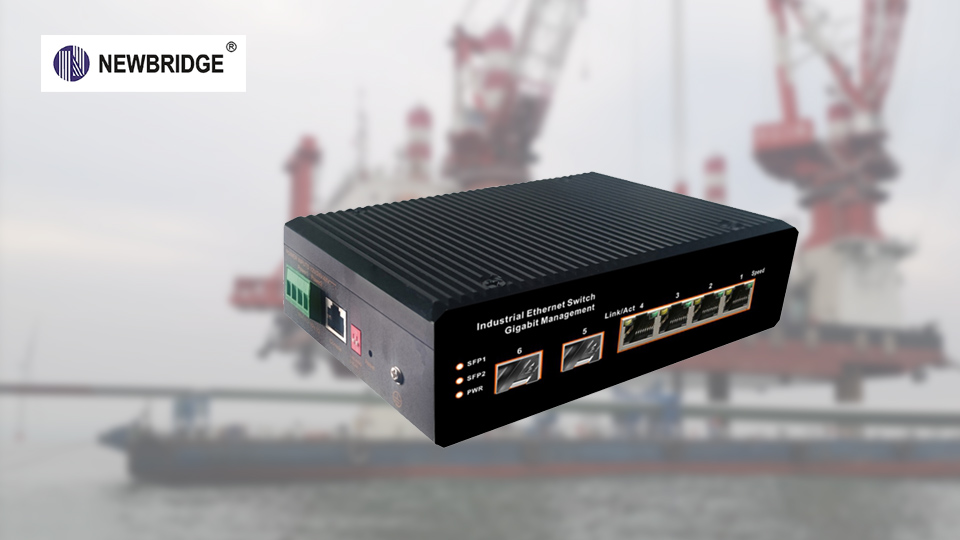In the industrial field, the stability and reliability of network communication are crucial, and the redundancy technology of industrial switches has become a key factor in ensuring network connectivity and data transmission reliability. The following is an introduction to redundancy technology and application scenarios for industrial switches:
Redundancy technology

Redundant
Dual power redundancy: using dual independent power inputs, equipped with intelligent switching modules, such as hot swappable design. When the main power supply fails, it can automatically switch to the backup power supply to ensure stable power supply for the equipment. For example, the dual power module of an industrial switch can achieve seamless switching in milliseconds in the event of a single power failure, ensuring that the equipment can still operate normally in the event of power fluctuations or power failures.
Hot spare slot design: The switch is equipped with multiple hot swappable modules, such as power module, fan module, and interface module. When a module fails, it can be quickly replaced without affecting the normal operation of the network, improving the availability of the system.
Link aggregation: By binding multiple physical links into a logical link, redundancy and bandwidth stacking of links are achieved. When one of the links fails, the data will automatically switch to other normal links to ensure the continuity of data transmission. For example, aggregating four 1Gbps physical links can not only provide a total bandwidth of 4Gbps, but also automatically distribute traffic to the other three links in case of a link failure.
Protocol redundancy
Ring redundancy protocol: an optimized version based on STP (Spanning Tree Protocol), such as RSTP (Fast Spanning Tree Protocol), MSTP (Multi Spanning Tree Protocol), ERPS (Ethernet Ring Protection Switching Protocol), etc. These protocols can shorten the network failure recovery time to the millisecond level. For example, the ERPS ring network protocol can be used for single ring and multi ring networking, supporting fast ring networks with a fault self-healing time of less than 50ms.
Parallel Redundancy Protocol (PRP) and High Availability Seamless Redundancy (HSR): These two technologies are designed specifically to ensure zero network failures. By using products that meet these standards, users' networks will not experience any unexpected interruptions and can meet scenarios that require extremely high network reliability.
Application scenarios
Industrial automation and intelligent manufacturing: In an automation network composed of PLCs, sensors, and actuators, redundancy technology ensures uninterrupted data flow on the production line in the event of equipment failure. For example, on the automated production line of an automobile manufacturing factory, a large number of industrial switches are connected to various devices through redundant technology. Even if a switch or link fails, the continuity of the production process can be ensured, avoiding production line stagnation caused by network interruptions, thereby improving production efficiency and reducing production costs.
Intelligent transportation system: used for traffic signal control, video surveillance, vehicle recognition and other scenarios. For example, in the intelligent traffic management of cities, the redundant network of industrial switches ensures the reliability of traffic signals and monitoring systems. Through the ring network redundancy protocol, when a link is interrupted due to construction, natural disasters, or other reasons, the network can switch to a backup link within milliseconds, ensuring the normal transmission of traffic signals and real-time uploading of monitoring videos, ensuring smooth and safe urban traffic.
Energy and power monitoring: In substation and transmission line monitoring, redundancy technology prevents data transmission interruptions caused by power equipment failures. For example, in power SCADA systems, the use of Fast Ring Network Protocol (FRP) can balance low latency and high availability. Industrial switches use technologies such as dual power redundancy and ring network redundancy to ensure uninterrupted transmission of monitoring data to the control center in case of power system failures or abnormalities, so that staff can take timely measures to ensure the stable operation of the power system.
Data Center: In data centers that require high reliability, the redundancy technology of industrial switches ensures traffic continuity during power outages through passive connections (such as optical switches), while supporting load balancing of asymmetric traffic. For example, the core switches in the data center adopt link aggregation and dual power redundancy technology, which can not only provide high bandwidth data transmission capability, but also automatically switch to the backup link or power supply when a link or power supply fails, ensuring the business continuity of the data center and meeting the high reliability requirements of enterprises for data storage and processing.
